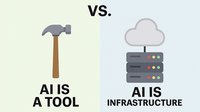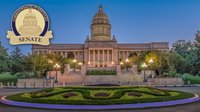School leaders and educators began grappling with the role handheld electronic devices should play in educational spaces in the 1980s, when students brought pagers to schools in increasing numbers.[1] Educators worried the devices could disrupt the classroom and hurt academic performance.[2] Those concerns continued as cellphones and smartphones became widely adopted in later decades, leading districts to set policies on where and when personal devices could be used on campus.[3]
In most states, school boards or superintendents most often set policies on cellphones and other technologies in public schools. According to the National Center for Education Statistics (NCES), around 76% of schools said they banned the non-academic use of cell phones or smartphones during school hours during the 2021-22 school year, down from 91% in 2010.[4] In many high schools, administrators allowed cell phone use at designated times during the school day, such as lunch.[5]
Beginning with Florida in 2023, some states enacted laws or policies regulating student cellphone usage in public schools. Proponents of these restrictions argued that cellphones distract students, adversely affecting learning, and referenced academic research suggesting cellphones and social media increase anxiety and depression in children.[6][7] Opponents said enforcing classroom cellphone bans can be difficult and that many parents use cellphones to keep in contact with their children, especially during emergencies.[8][9][10]
HIGHLIGHTS
- As of May 23, 2025, 28 states had enacted laws or policies on K-12 classroom or school cellphone usage.
- Twenty-one states—Arizona, Alabama, Arkansas, California, Ohio, Florida, Georgia, Iowa, Indiana, Kentucky, Louisiana, Nebraska, Nevada, New York, North Dakota, Oklahoma, South Carolina, Tennessee, Virginia, Utah, and West Virginia—ban or limit cellphones in classrooms.
- The Connecticut Department of Education, the Kansas Department of Education, the Oregon Department of Education, and the Washington Department of Education adopted policies encouraging districts to limit cellphone usage in classrooms. Idaho Gov. Brad Little (R) issued an executive order encouraging districts to limit cellphones in schools.
- Two states—Alaska and Minnesota—require K-12 public school districts to adopt policies around student cellphone use, though the laws don't specify the form those policies should take.
Recent news
Below, you'll find the four most recent state actions on cellphones in schools. Click here to see a full timeline.
- May 28, 2025: Nevada Gov. Joe Lombardo (R) signed SB 444, requiring K-12 public school districts to adopt policies regulating cellphones during the school day. Among other things, the policies must prohibit students from accessing their cellphone during class, with some exceptions.[11]
- May 20, 2025: The Alaska State Legislature voted 46-14 to override Gov. Mike Dunleavy's (R) veto of HB 57, an education funding bill that includes a requirement that K-12 public school districts develop policies regulating student cellphone use. HB 57 does not require that districts ban cellphones during the school day, only that they adopt a policy and share it with parents, students, and school employees.[12]
- May 20, 2025: Nebraska Gov. Jim Pillen (R) signed LB 140, a bill prohibiting K-12 public school student cellphone use on school property or during school functions. The law allows for exceptions, including for emergencies.[13]
- May 14, 2025: Alabama Gov. Kay Ivey (R) signed HB 166, which prohibits students in K-12 public schools from accessing their cellphones during the school day.[14]










